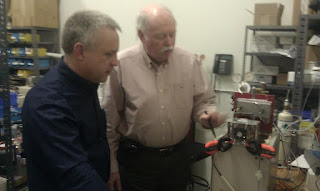Methods and Applications for Exposure Assessment Chemical Detection in Real Time
Advanced | 1.34 CM Points/ 8 Contact Hours/ 1.0 CEU/COC Point | Sunday | 8:00 a.m. - 5:00 p.m. | Limit: 60
Topics:
Hazardous Chemicals, Real-Time Detection Systems
Hazardous Chemicals, Real-Time Detection Systems
Description: The PDC is targeted towards industrial hygiene, safety, and emergency response personnel who use or may be called on to use field-portable detection and identification tools, or professionals who may need to understand data produced by such tools. Participants should have some knowledge of the general capabilities and limitations of detection and identification tools. The expert case studies presented will demonstrate how each type of tool has been effectively used to answer important human exposures questions while the hands-on part of the PDC will give participants greater depth of experience beyond typical classroom delivery of information. The didactic training portion will include slides showing instrumentation in field settings and resulting data; additionally the hands-on portion of the PDC will include instruments and associated data processing hardware/software.
Value Added: Case studies, flow charts and other tools to illustrate and formalize the selection process will be provided.
Prerequisites: IH level knowledge of chemistry, interest in field-portable detection tools and the exposure assessment process
Outcomes: Upon completion, the participant will be able to:
- Develop a field detection plan of hazards based on costs, availability, and operating principles of important field detection and identification technologies.
- Select the best field detection and identification tool based on capabilities and limitations.
- Describe important human exposure problems.
- Discuss technologies used in implementing critical decisions based on field analyses.
Outline:
- Introduction
- Discuss the ways that real time detection instrumentation supports and improves the exposure assessment process
- Discuss the range of detection and identification tools, capabilities/limitations, costs, and training needs for each
- Presentation of a case study for representative detection/identification tool discussed where important human exposure questions were answered in field settings including:
- Photoionization detectors
- Portable infrared spectrometry
- Portable gas chromatography/mass spectrometry
- Personal detectors
- Hands-on detection system demonstrations (students rotate through three separate stations in small groups)
- Conclusion

Transfer of Knowledge: Instructors will evaluate participants understanding of the materials presented based on:
- Hands-on demonstrations and practicum
- Group activities
Sponsoring Committee:
Real-Time Detection Systems
Real-Time Detection Systems
Important PDC dates:
- May 18 — E-handout download instructions are e-mailed.
- June 1 — Contact the AIHA if you have not received your e-handout e-mail.
- June 1 — AIHce 2012 online communities for collaborative learning open.
- June 15-17 — AIHce 2012 PDCs are presented. Participants must bring a printed or electronic copy of their PDC handout.
- August 31 — AIHce 2012 online communities for collaborative learning close.
- August 27 – Educational transcripts updated and available for download
Instructors:
- Robert Henderson, BS, MBA, Gfg Instruments, Inc.
- Philip Smith, PhD, CIH, USDOL - OSHA, Health Response Team
Assisting:
Dr. Jack Driscoll, PID Analyzers, LLC






No comments:
Post a Comment